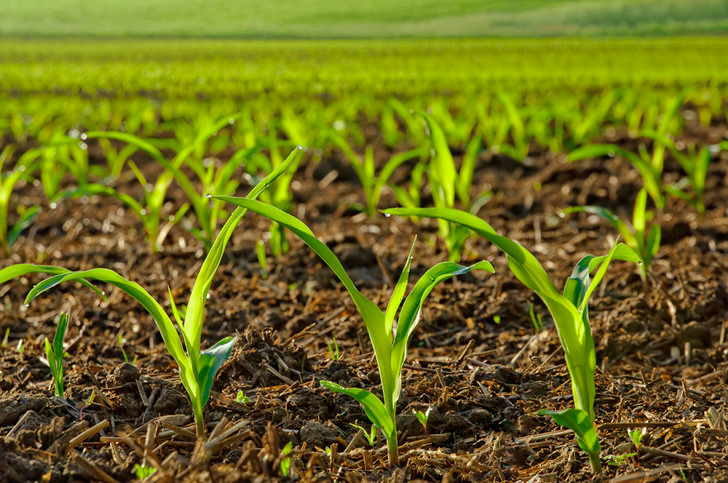
Higher levels of carbon dioxide in the atmosphere may increase water-use efficiency in crops and also boost yield losses due to climate change, according to a new NASA study, published in the Nature Climate Change.
The study shows some compensation for the adverse impacts of temperature extremes caused by increasing emissions of carbon dioxide and other greenhouse gases.
Higher levels of carbon dioxide affect crops in two important ways: they boost crop yields, and they reduce the amount of water crops lose.
"There has been very little impact assessment analysis that looked at the dual effect on yield and water use and how they play out in different regions of the world, which is critical to anticipating future agricultural water demands," said Delphine Deryng, lead author and a climate scientist at NASA’s Goddard Institute for Space Studies (GISS) in New York City.
To study those effects, for wheat, maize, soybean and rice crops, the researchers simulated changes to estimate crop water productivity.
They looked at the amount of yield produced per unit of water, which is a common measurement for assessing crop water-use efficiency.
Results showed that yields for all four crops grown at levels of carbon dioxide remaining at 2000 levels would experience severe declines in yield due to higher temperatures and drier conditions.
But when grown at doubled carbon dioxide levels, all four crops fared better.
Carbon dioxide concentrations
According to the study, the impact of doubled carbon dioxide concentrations on crop water productivity and yield varies regionally.
Results show that maize suffers yield losses with doubled carbon dioxide levels, due in large part to the plant’s already greater efficiency at using carbon dioxide for photosynthesis compared with the other crops.
Maize yields fall by 15 percent in areas that use irrigation and by 8 percent in areas that rely on rain.
Even so, losses would be more severe without the carbon dioxide increase: yields would decrease 21 percent for irrigated maize and 26 percent for rainfed maize.
"The impact on crop water productivity and yield is strongest in regions like southern Africa where water is a limiting factor," Deryng said.
"Maize in these regions experiences the most relief from better water-use efficiency."
As for wheat, doubled carbon dioxide levels bring about yield increases across the board.
Rain-fed wheat grown at higher latitudes such as those of the United States, Canada and Europe, which have more moderate temperatures and longer growing seasons, experience an overall increase in yield of almost 10 percent, while their consumption of water goes down by a corresponding amount.
For rainfed wheat grown in more arid climates, such as southern Africa and India, results show that doubled carbon dioxide levels, and their associated climate change impacts, increase yield by 8 percent, an increase that’s driven by improved crop water productivity of up to 50 percent.
The study offers some hope for crops grown in arid, often economically challenged areas, said Cynthia Rosenzweig, a climatologist at GISS.
"For example, farmers may switch to crops where their improved photosynthesis and more efficient water use more than offsets losses due to the high temperatures that climate change will bring."
More field experiments needed
But Rosenzweig said that more field experiments are needed.
"The uncertainty of carbon dioxide effects are greater in arid regions because experiments have been carried out mostly in temperate regions of the northern hemisphere," she said.
"We need field observations in these drier regions in order to validate and further improve our models."
There is also a need for research that explores the impact of elevated carbon dioxide levels on crop nutrition, which wasn’t investigated in this study.
"Crops also need nitrogen to grow, for example, and in many parts of Africa there’s not enough fertilizer," she said.
"Imbalances between nitrogen and carbon in the crop tissues could lead to fewer nutrients like iron, zinc, along with a reduction in the protein content."
The researchers say their findings cast a light on agriculture globally and highlight the importance of studying arid and semi-arid cropping systems.
"For farmers, water is essential,” Deryng said. "Building on this research will help them and other stakeholders prepare for production in a hotter, drier planet."
